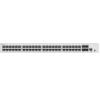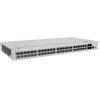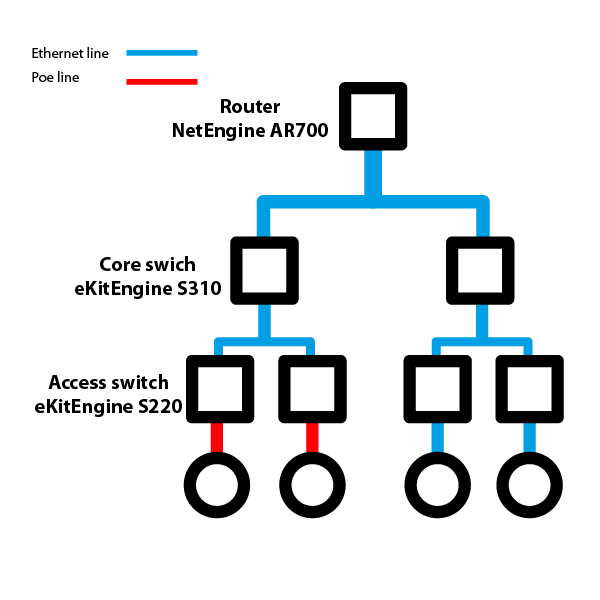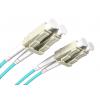-
€



Huawei S220-48T4X è uno switch gestito della serie eKitEngine. È dotato di 48 porte Ethernet gigabit (10/100/1000 Mb/s) e 4 slot SFP+ (10 Gb/s). Supporta la gestione Layer 2, inclusi protocolli come STP (STP / RSTP / MSTP) e ERPS (Ethernet Ring Protection Switching). Garantisce un alto livello di sicurezza della rete, supportando vari tipi di autenticazione (basata su indirizzo MAC o 802.1X) e proteggendo contro vari tipi di attacchi esterni. Il dispositivo può essere gestito tramite interfaccia Web UI, CLI o utilizzando SNMP. Inoltre, supporta la gestione cloud e tramite l'applicazione Huawei eKit.
S220-48T4X è dotato di alimentatore AC integrato e il consumo massimo di potenza è di 35,04 W. Utilizza un sistema di raffreddamento attivo con regolazione intelligente della velocità delle ventole. Questo dispositivo è ideale come switch di accesso avanzato in ambienti in cui non si utilizza l'alimentazione PoE, oppure come switch principale in reti più piccole.
48 porte gigabit Ethernet, 4 slot SFP+
Lo switch è dotato di 48 porte Ethernet gigabit (10/100/1000 Mb/s) e 4 slot SFP+ (10 Gb/s). La capacità di commutazione è di 128 Gb/s, mentre la velocità di inoltro dei pacchetti raggiunge i 95 Mp/s. Gli slot SFP+ offrono alte velocità (fino a 10 Gb/s), consentendo di connettere tra loro segmenti di rete o dispositivi ad alte prestazioni, come server.


Gestione Layer 2
Il dispositivo offre numerose funzionalità di gestione Layer 2, come il supporto per VLAN, multicast (IGMP Snooping), funzioni QoS e liste di controllo accessi (ACL). Supporta i protocolli Spanning Tree (STP / RSTP / MSTP) e il moderno standard ERPS (Ethernet Ring Protection Switching) definito nello standard ITU-T G.8032.
Lo switch fornisce le necessarie protezioni per la rete. Protegge contro gli attacchi DoS, come SYN flood, Land, Smurf e ICMP flood. Include anche misure di sicurezza contro attacchi mirati agli utenti, come attacchi DHCP server, IP/MAC spoofing, DHCP request flood e DHCP CHADDR.
La gestione avviene tramite l'interfaccia grafica Web, CLI o utilizzando SNMP (v1, v2c, v3) / SSHv2.0. I dispositivi della serie S220 possono anche essere gestiti nel cloud, consentendo di utilizzare l'applicazione Huawei eKit app per funzionalità aggiuntive.
.
Applicazione
L'applicazione principale del S220-48T4X è come switch di accesso in località in cui non è necessario utilizzare l'alimentazione PoE. Si adatta perfettamente a reti basate su soluzioni eKitEngine, poiché l'uso di dispositivi della stessa serie semplifica la configurazione e la gestione successiva. In reti più grandi, lo S220-48T4X può anche essere utilizzato come switch di aggregazione, fungendo da dispositivo intermedio tra lo switch principale e gli switch di accesso.

Specifiche
| Huawei S220-48T4X | |
| Capacità di commutazione | 176 Gb/s |
| Velocità di inoltro pacchetti | 131 Mp/s |
| Porte |
48x gigabit Ethernet 10/100/1000 Mb/s 4x SFP+ (10 Gb/s) |
| Dimensioni | 43.6 mm x 442 mm x 220 mm |
| Altezza | 1U |
| Peso | 3,59 kg |
| Tipo di alimentazione | Alimentatore AC integrato |
| Tensione nominale di ingresso | 100 - 240 V AC, 50/60 Hz |
| Intervallo di tensione di ingresso | 90 - 29 V AC, 45/65 Hz |
| Consumo massimo di energia | 44,3 W |
|
Rumorosità |
A temperatura normale: 46,6 dB (A) A temperatura elevata: 54,3 dB (A) |
| Temperatura di esercizio consentita | da -5 a 50 °C |
| Temperatura di stoccaggio consentita | da -40 a 70 °C |
| Umidità relativa consentita | 5%-95% senza condensa |
| Protezione contro le sovratensioni:Porte di servizio | ±10 kV |
| Protezione contro le sovratensioni:Porta di alimentazione | ±6 kV |
| Raffreddamento | Attivo, con regolazione intelligente della velocità delle ventole |
| Caratteristiche software | |
|---|---|
| Tabella degli indirizzi MAC: | Apprendimento/aging automatico Fino a 16K indirizzi MAC Ingressi MAC statici/dinamici/blackhole Filtraggio degli indirizzi MAC sorgente Limite degli indirizzi MAC memorizzati su interfaccia |
| VLAN |
4096 VLAN Voice VLAN Assegnazione VLAN basata su indirizzo MAC, protocollo, subnet IP, policy e porte VLAN stacking |
| Ethernet switching |
G.8032 ERPS (Ethernet Ring Protection Switching) STP (IEEE 802.1d), RSTP (IEEE 802.1w), MSTP (IEEE 802.1s) Protezione BPDU / root / loop Tunnel BPDU |
| Multicast | IGMP v1 / v2 / v3 oraz IGMP v1 / v2 / v3 snooping |
| Stabilità: |
LACP (Link Aggregation Control Protocol) LLDP (Link Layer Discovery Protocol) |
| Funzioni QoS / ACL | Limite di traffico basato su ingressi/uscite delle porte Reindirizzamento dei pacchetti Due-rate three-color CAR, gestione del traffico basata su porte 8 code per porta Algoritmi di accodamento: DBR, SP, DRR+SP Filtraggio dei pacchetti da Layer 2 a Layer 4 Limitazione e modellazione del traffico sulle porte |
| Sicurezza | Gestione gerarchica degli utenti e protezione tramite password Protezione contro attacchi DoS, APR e ICMP Assegnazione di indirizzi IP, indirizzi MAC, ID porte e ID VLAN Isolamento delle porte, sicurezza delle porte, sticky MAC Blackhole MAC address entries Autenticazione IEEE 802.1X e limite di utenti per interfaccia Metodi di autenticazione multipli (AAA, RADIUS, HWTACACS, NAC) SSH v2.0 HTTPS Protezione CPU Liste bianche e nere Client DHCP, DHCP Snooping |
|
Gestione e manutenzione della rete |
Gestione cloud basata su NETCONF/YANG VCT (Virtual Cable Test) Configurazione remota e manutenzione tramite Telnet SNMP v1/v2/v3 Gestione tramite interfaccia Web HTTPS LLDP/LLDP-MED Log di sistema e allarmi IEEE 802.3az: EEE (Energy Efficient Ethernet) Mirroring delle porte Espansione della rete tramite Registration Query Center |






 Polski
Polski English
English Italiano
Italiano Español
Español Čeština
Čeština Српски
Српски Deutsch
Deutsch Ελληνικά
Ελληνικά Slovenský
Slovenský









